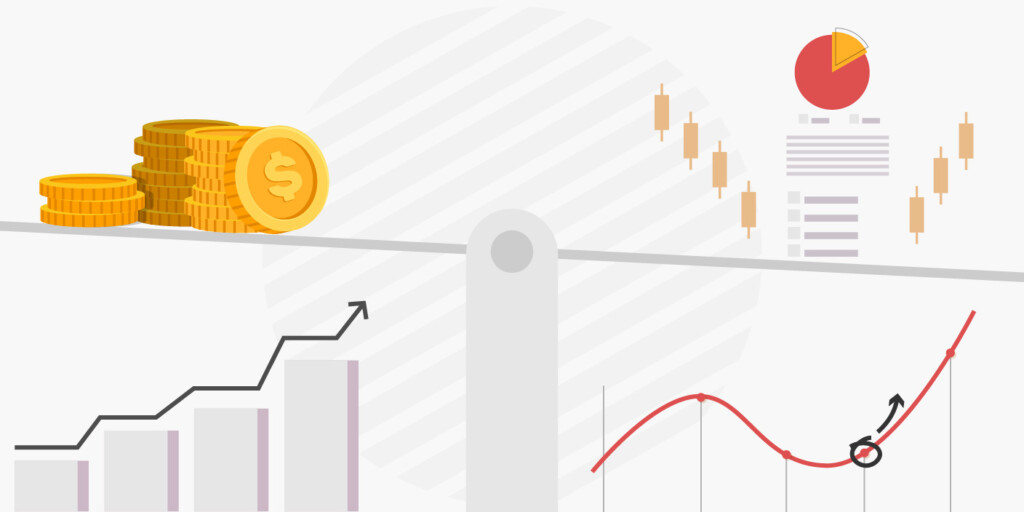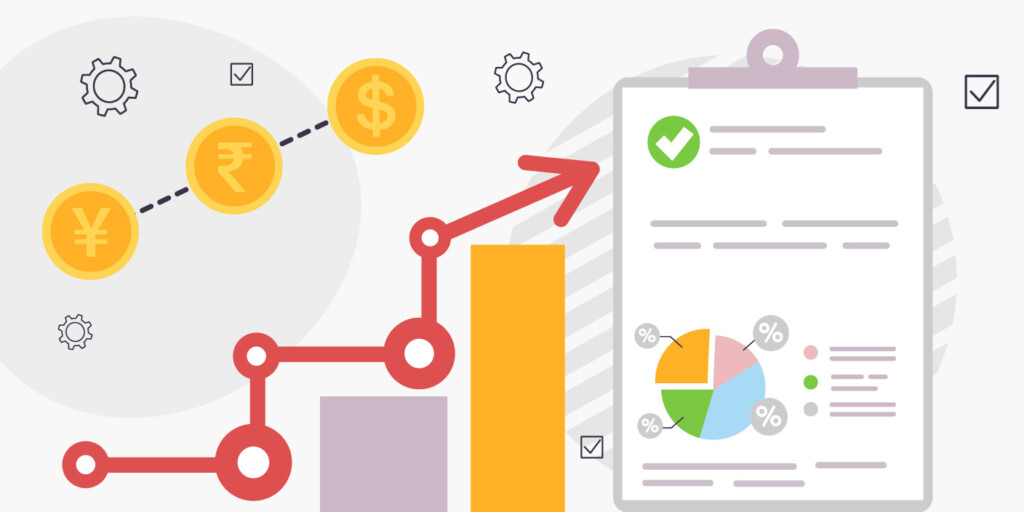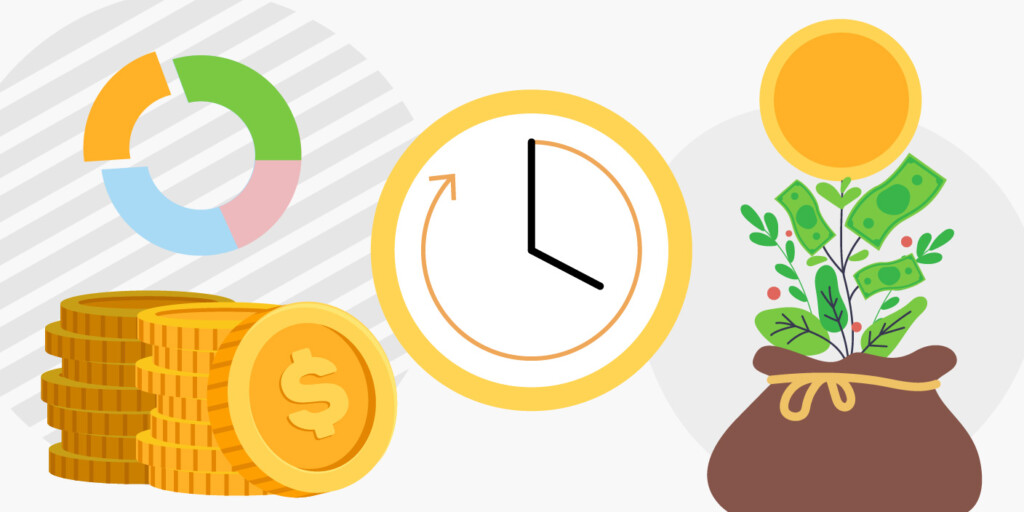

Trading and investing are often confused. Still, these are different approaches with different opportunities and varying degrees of risk.
According to statistics, an investor earns around 15-20% return per year, while a trader may earn 15-20% weekly.
However, the risks of trading may cost you more. Read on to learn how to measure the risks of trading and investing.
Trading and investing: where the differences lie
Before answering the question “Is trading or investing a higher risk?” it’s worth understanding the difference between the two strategies. Investing and trading involve buying and selling financial instruments, including stocks, indices, ETFs, and commodities. The primary difference is the period and ownership.
Trading is an activity that implies buying and selling financial assets without owning them. This means a trader doesn’t need to own an asset to sell it, which allows them to take advantage of both rising and falling markets. Although there are long-term traders who hold positions over months and years, this is more of an exception, and traders keep positions open over short and medium terms. Usually, traders consider trading as an additional source of income and use it for short-term goals.
Investing is an activity that implies buying a financial instrument with the hope that it will increase in value over time. Unlike trading, where people take advantage of rising and falling prices, investing is profitable only when the price grows.
As investors profit from a significant rise in the value of an asset, which is unlikely to happen over the short term, they hold assets over a long period and consider long-term goals, including saving for retirement or buying a house.
There are three basic aspects that determine the level of risk in investing and trading.
Capital

The amount of capital is one of the cornerstones of risk measurement. You should agree that it’s psychologically easier to accept a loss of $100 than of $10,000.
Investing
The amount of capital depends on the asset, your goals, and your financial opportunities. It’s said you can start investing with $10. Yes, you can find stocks below $10. However, it doesn’t mean you can gain considerable returns. Even if you buy 2-3 stocks having only $10, it’s unlikely their price will skyrocket to $10,000 even in 5 years.
Note: to gain considerable returns in the future, you need to invest significant funds now.
Trading
While it’s unlikely you will be able to gain considerable profit from investing $10, it’s real when trading. Most brokers provide leverage which can increase your capital. Sometimes, the leverage may be up to 1:1000, so you can have $10 to trade $10,000.
$10 alone is unlikely to bring large returns when investing, and you will need to invest more. But when you use leverage to multiply that $10, trading seems less risky. However, it’s not that simple.
Bringing potentially higher returns, leverage trading bears higher risks of losses. Moreover, traders usually open many trades over a short term. The amount you invest in the long run can be reached within a few months when trading.
The amount risked will depend on the trading approach too. For instance, statistics say swing traders open around 20 trades per month, while day traders may open up to 100 trades daily. Is swing trading riskier than day trading? No, day trading bears higher risks.
Market volatility and diversification

Traders and investors put their funds in the same assets. The level of volatility they experience will be the same. However, the effect of that volatility will vary.
Trading
Traders like highly volatile assets because they provide opportunities for higher returns. However, increased volatility can lead to unexpected losses and early close of positions.
Guides recommend that traders use diversification to limit risks during significant market turbulence. Still, the range of assets traders can use to diversify their portfolios is narrower than that of investors. Additionally, traders suffer when monitoring many trades at once. High price volatility may require traders to reconsider open positions within a few minutes.
Investing
When investing, people also meet volatility, but it has a smaller effect. Investors hold assets in the long run, and the short- and medium-term price changes don’t affect their portfolio and can’t deprive them of their assets.
Investors have more opportunities for portfolio diversification. Many people use ETFs and mutual funds—single instruments that hold various assets. Traders can also deal with ETFs via CFDs. A CFD is a contract whose mechanics are similar to those of individual stocks and currency pairs, for instance, so the effect of diversification doesn’t apply to it.
Note: you should distinguish between different financial instruments when identifying volatility risks. People often ask, “Which is riskier: stocks or bonds?” Stocks are considered riskier assets for investing. However, the answer isn’t always that simple. Another popular question is, “Is forex riskier than stocks?” If you compare forex trading with stock investing, professionals will likely answer that forex is riskier. However, if you compare forex and stock CFD trading, answers will vary, as their trading mechanics are similar and are both considered highly volatile.

Timeline

Another aspect people pay attention to when determining high-risk trading and investing is the timeline.
Trading
Trades are usually kept open for a maximum of a few weeks. People can trade in the longer term but will need significant sums to stay in the market during periods of large price fluctuations. Traders mostly use stop-loss orders to exit the market with minimum losses. Even if a trader doesn’t set a stop-loss level, they can close a trade manually if they believe the market won’t recover.
Investing
Is investing in the long term safe? There are doubts. Investing is mostly done in the long run—investors buy an asset and wait for it to surge. However, the market may turn in the opposite direction.
According to statistics, the stock market recovery from lows during the world economic crises and pandemic took 50 to 1,515 days. While 50 days aren’t a long investment period, 1,515 days, around four years, doesn’t look very optimistic. Additionally, there is no guarantee the stocks you invested in will also recover. This means investors have few instruments to control the risks of a price decline.
Summing up
There is no single answer to whether investing or trading is riskier. While trading involves volatility risks and risks of large losses when using leverage, investing provides fewer opportunities to control losses in the long run and requires more significant capital—a loss of which can be more harmful to your budget.
When deciding whether you should trade or invest, it’s worth asking, “What is the riskiest type of trading?” and “Which is the riskiest investment?” After you answer those questions, you can choose other assets for investing and trading and try both approaches to decide which one suits your capital, goals, and skills.
Sources:
Investing vs. Trading: What’s the Difference?, Investopedia







